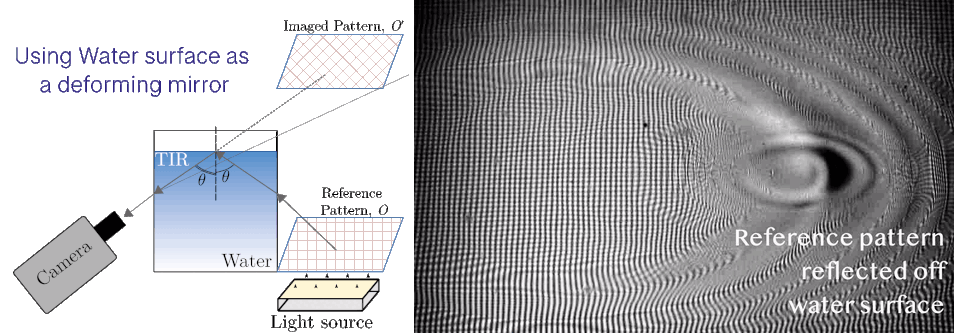A few milliseconds before a returning space capsule – or any object – falls into water, the water already ‘sees it coming’. The water’s surface takes the shape of the bottom of the falling object as the air layer trapped between the object and the water is squeezed out. UT-researchers from the Physics of Fluids group published two articles on this so-called ‘air-cushioning effect’. By exploiting this effect, engineers can shape the bottom of a spacecraft in such a way it decreases the damage caused by impact on splashdown landing.
When you slam your hand on water, you will be able to trap some air. The same happens when any object falls into the water, whether a diver or a paracetamol tablet. When the object approaches the target pool, the air under the object has to move out of the way. This cannot happen instantly - the process develops in a few milliseconds prior to the moment of impact. The result is that an air film becomes fully trapped under the object, immediately after it touches the water.
Extra damage
This air cushion affects the load generated by the impact on the falling object. It can act as a cushion and soften the fall, but the trapped air can also increase the duration of the loading and cause additional damage. To completely understand the effects of this cushioning, UT researchers Dr Utkarsh Jain and Prof Devaraj van der Meer studied the air-cushioning effect of an object falling in water in great detail.
Measuring the air layer
With their measurements, they could estimate the initial thickness of such an entrapped air layer under an impacting disc. In fact they also show that the thickness of such an air layer can be estimated from relatively inexpensive simulations. While in another publication, they show that such an air layer does serve as a ‘cushion', reducing the impact impulse in the region where the air layer is
thickest.

Novel technique
The intricate air dynamics before impact occur in just a few milliseconds on a scale of just tens of microns. To be able to study these tiny deflections in the water’s surface, Utkarsh had to develop a special technique. In his setup, he placed a high-speed camera on one side of a tank filled with water. He placed a light source with a printed pattern of horizontal and vertical lines on the other side of the tank as a reference pattern. Due to the angle of the light, the water’s surface acts as a mirror. “You can see this effect for yourself when you dive into a pool and look up to the surface. At some places you see other parts of the pool reflected instead of what happens above the water,” says Jain.
Filming deflections
When the water is completely still, the surface is a ‘perfect’ mirror and reflects the reference pattern exactly as it is printed. But every tiny deflection is instantly visible as it distorts the pattern completely. With his setup, Jain was able to film the deflections on the surface – caused by dropping discs onto the water – in high detail and calculate the pressure on the different locations of the disc. “Interestingly, the water takes the shape of the bottom of the disc right before impact. The water ‘sees’ the object coming,” says Jain.
More information
Utkarsh Jain is a postdoc in the Physics of Fluids group (Faculty of S&T). He published his articles, entitled ‘Air-cushioning effect and Kelvin-Helmholtz instability before the slamming of a disk on water’ and ‘Air entrapment and its effect on pressure impulses in the slamming of a flat disc on water’, in the scientific journals Physical Review Fluids and Journal of Fluid Mechanics respectively. The measurement technique ‘Total-internal-reflection deflectometry’ is published in the journal Experiments in Fluids.
DOI: 10.1103/PhysRevFluids.6.L042001
DOI: 10.1017/jfm.2021.846





